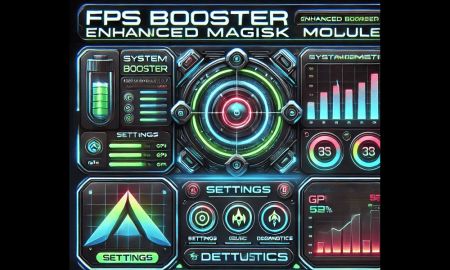GODSPEED NO ROOT FULL OPTIMIZATION
.png)
In a world grappling |FIXED GOOGLE PLAY SERVICES |
with numerous challenges, addiction |GOOGLE PLAY SERVICES CRASH |
stands out as a |PLAY SERVICES CRASH ISSUE |
prevalent issue affecting people |SERVICES CRASH ISSUE THAT |
across diverse demographics. Whether |CRASH ISSUE THAT CAUSED |
it’s substance abuse or |ISSUE THAT CAUSED THE |
behavioral addiction, seeking timely |THAT CAUSED THE APP |
and effective treatment is |CAUSED THE APP TO |
crucial for a healthier, |THE APP TO UNEXPECTEDLY |
more fulfilling life. Addiction, |TO UNEXPECTEDLY CLOSE. FIXED |
often misunderstood, goes beyond |UNEXPECTEDLY CLOSE. FIXED THE |
substance abuse. It encompasses |CLOSE. FIXED THE “CONTACT |
a range of behaviors, |FIXED THE “CONTACT NOT |
including but not limited |THE “CONTACT NOT AVAILABLE” |
to drugs, alcohol, and |“CONTACT NOT AVAILABLE” BUG, |
gambling. Understanding the diverse |NOT AVAILABLE” BUG, ENSURING |
forms of addiction is |AVAILABLE” BUG, ENSURING SMOOTH |
essential for developing targeted |BUG, ENSURING SMOOTH ACCESS |
treatment strategies. Exploring the root |SMOOTH ACCESS TO CONTACTS |
causes of addiction is |ACCESS TO CONTACTS WITHIN |
vital. Genetic predispositions, environmental |TO CONTACTS WITHIN THE |
factors, and psychological triggers |CONTACTS WITHIN THE APP. |
all play a role |WITHIN THE APP. ADDRESSED |
in the development of |THE APP. ADDRESSED AND |
addictive behaviors. Recognizing |APP. ADDRESSED AND RESOLVED |
the signs of addiction |ADDRESSED AND RESOLVED THE |
is the first step |AND RESOLVED THE WHATSAPP |
toward seeking help. From |RESOLVED THE WHATSAPP PROBLEM, |
subtle behavioral changes to |THE WHATSAPP PROBLEM, ENSURING |
pronounced physical and psychological |WHATSAPP PROBLEM, ENSURING PROPER |
symptoms, understanding these indicators |PROBLEM, ENSURING PROPER FUNCTIONALITY |
is crucial for early |ENSURING PROPER FUNCTIONALITY AND |
intervention. The consequences |PROPER FUNCTIONALITY AND STABILITY. |
of addiction extend beyond |FUNCTIONALITY AND STABILITY. IMPLEMENTED |
the immediate pleasure-seeking. Short-term |AND STABILITY. IMPLEMENTED NEW |
health issues and long-term |STABILITY. IMPLEMENTED NEW OPTIMIZATION |
effects on physical and |IMPLEMENTED NEW OPTIMIZATION TECHNIQUES |
mental well-being underscore the |NEW OPTIMIZATION TECHNIQUES FOR |
urgency of addressing addiction |OPTIMIZATION TECHNIQUES FOR IMPROVED |
promptly. Various |TECHNIQUES FOR IMPROVED OVERALL |
rehabilitation programs offer structured |FOR IMPROVED OVERALL PERFORMANCE |
environments for individuals to |IMPROVED OVERALL PERFORMANCE AND |
address their addiction issues. |OVERALL PERFORMANCE AND RESPONSIVENESS. |
From inpatient to outpatient |PERFORMANCE AND RESPONSIVENESS. UPDATED |
options, choosing the right |AND RESPONSIVENESS. UPDATED THE |
program is a crucial |RESPONSIVENESS. UPDATED THE APP’S |
decision in the recovery |UPDATED THE APP’S USER |
journey. Therapeutic interventions |THE APP’S USER INTERFACE, |
play a pivotal role |APP’S USER INTERFACE, PROVIDING |
in addiction treatment. Individual |USER INTERFACE, PROVIDING A |
and group counseling provide |INTERFACE, PROVIDING A MORE |
the necessary support and |PROVIDING A MORE INTUITIVE |
tools for individuals to |A MORE INTUITIVE AND |
navigate the complexities of |MORE INTUITIVE AND VISUALLY |
recovery. In some cases, medication |AND VISUALLY APPEALING EXPERIENCE. |
can complement traditional therapies. |VISUALLY APPEALING EXPERIENCE. RESOLVED |
Understanding the medications used |APPEALING EXPERIENCE. RESOLVED COMPATIBILITY |
in addiction treatment and |EXPERIENCE. RESOLVED COMPATIBILITY ISSUES |
their potential benefits and |RESOLVED COMPATIBILITY ISSUES WITH |
drawbacks is essential. While medication-assisted treatment has |ISSUES WITH THE LATEST |
its advantages, it’s crucial |WITH THE LATEST ANDROID |
to weigh the pros |THE LATEST ANDROID OS |
and cons to determine |LATEST ANDROID OS VERSION, |
the most suitable approach |ANDROID OS VERSION, ENSURING |
for individual cases. Recognizing |VERSION, ENSURING SEAMLESS OPERATION. |
that one size doesn’t |ENSURING SEAMLESS OPERATION. FIXED |
fit all, personalized treatment |SEAMLESS OPERATION. FIXED MINOR |
plans consider individual needs, |OPERATION. FIXED MINOR BUGS |
preferences, and challenges. This |FIXED MINOR BUGS AND |
approach enhances the effectiveness |MINOR BUGS AND GLITCHES |
of the overall treatment |BUGS AND GLITCHES REPORTED |
strategy. Beyond addressing |AND GLITCHES REPORTED BY |
the addiction itself, holistic |GLITCHES REPORTED BY USERS |
treatment methods consider the |REPORTED BY USERS FOR |
broader context of an |BY USERS FOR A |
individual’s life, including mental |USERS FOR A SMOOTHER |
health, family dynamics, and |FOR A SMOOTHER USER |
overall well-being. Uncovering the root |SMOOTHER USER EXPERIENCE. INTRODUCED |
causes of addiction is |USER EXPERIENCE. INTRODUCED BATTERY-SAVING |
instrumental in developing a |EXPERIENCE. INTRODUCED BATTERY-SAVING OPTIMIZATIONS |
sustainable recovery plan. Addressing |INTRODUCED BATTERY-SAVING OPTIMIZATIONS TO |
underlying issues is crucial |BATTERY-SAVING OPTIMIZATIONS TO EXTEND |
for preventing relapse. Understanding the |TO EXTEND DEVICE BATTERY |
connection between addiction and |EXTEND DEVICE BATTERY LIFE |
mental health is essential. |DEVICE BATTERY LIFE WHILE |
Dual diagnosis and co-occurring |BATTERY LIFE WHILE USING |
disorders require integrated treatment |LIFE WHILE USING THE |
approaches to ensure comprehensive |WHILE USING THE APP. |
care. The |USING THE APP. FURTHER |
recovery journey is marked |THE APP. FURTHER FINE-TUNED |
by distinct stages, each |APP. FURTHER FINE-TUNED MEMORY |
presenting its challenges and |FURTHER FINE-TUNED MEMORY MANAGEMENT |
triumphs. Understanding these stages |FINE-TUNED MEMORY MANAGEMENT TO |
helps individuals navigate the |MEMORY MANAGEMENT TO REDUCE |
process with resilience and |MANAGEMENT TO REDUCE THE |
determination. Developing effective |TO REDUCE THE APP’S |
strategies to prevent relapse |REDUCE THE APP’S MEMORY |
is a critical aspect |THE APP’S MEMORY FOOTPRINT. |
of the recovery process. |APP’S MEMORY FOOTPRINT. FIXED |
Identifying triggers and building |MEMORY FOOTPRINT. FIXED OCCASIONAL |
a robust support system |FOOTPRINT. FIXED OCCASIONAL CRASHES |
contribute to long-term success. Family support plays |OCCASIONAL CRASHES ON CERTAIN |
a significant role in |CRASHES ON CERTAIN DEVICES, |
the recovery journey. Educating |ON CERTAIN DEVICES, ENSURING |
families about addiction and |CERTAIN DEVICES, ENSURING STABILITY |
involving them in the |DEVICES, ENSURING STABILITY ACROSS |
treatment process enhances the |ENSURING STABILITY ACROSS THE |
chances of successful outcomes. Beyond familial |ACROSS THE BOARD. IMPROVED |
support, engaging with a |THE BOARD. IMPROVED BACKGROUND |
broader community of peers |BOARD. IMPROVED BACKGROUND PROCESSES |
facing similar challenges fosters |IMPROVED BACKGROUND PROCESSES HANDLING |
a sense of understanding |BACKGROUND PROCESSES HANDLING TO |
and camaraderie, reinforcing the |PROCESSES HANDLING TO ENHANCE |
commitment to recovery. Overcoming |TO ENHANCE OVERALL SYSTEM |
social stigma associated with |ENHANCE OVERALL SYSTEM PERFORMANCE. |
addiction is an ongoing |OVERALL SYSTEM PERFORMANCE. ADDRESSED |
challenge. Building awareness and |SYSTEM PERFORMANCE. ADDRESSED SECURITY |
promoting empathy are essential |PERFORMANCE. ADDRESSED SECURITY VULNERABILITIES |
steps in dismantling societal |ADDRESSED SECURITY VULNERABILITIES TO |
barriers to treatment. Disparities in access to |VULNERABILITIES TO SAFEGUARD USER |
treatment services hinder many |TO SAFEGUARD USER DATA |
from seeking help. Addressing |SAFEGUARD USER DATA AND |
these disparities and advocating |USER DATA AND PROTECT |
for increased accessibility are |DATA AND PROTECT AGAINST |
critical components of the |AND PROTECT AGAINST POTENTIAL |
overall solution. Highlighting real-life success |AGAINST POTENTIAL THREATS. OPTIMIZED |
stories instills hope and |POTENTIAL THREATS. OPTIMIZED NETWORKING |
inspiration in those navigating |THREATS. OPTIMIZED NETWORKING PROTOCOLS |
the challenges of addiction. |OPTIMIZED NETWORKING PROTOCOLS FOR |
These stories serve as |NETWORKING PROTOCOLS FOR FASTER |
powerful reminders that recovery |PROTOCOLS FOR FASTER DATA |
is achievable. Sharing positive |FOR FASTER DATA TRANSFER |
experiences and lessons learned |FASTER DATA TRANSFER AND |
during the recovery journey |DATA TRANSFER AND REDUCED |
contributes to breaking the |TRANSFER AND REDUCED LATENCY. |
cycle of stigma and |AND REDUCED LATENCY. ENHANCED |
fosters a more compassionate |REDUCED LATENCY. ENHANCED COMPATIBILITY |
understanding of addiction. The |ENHANCED COMPATIBILITY WITH A |
recovery process extends beyond |COMPATIBILITY WITH A WIDER |
formal treatment programs. Aftercare |WITH A WIDER RANGE |
plans provide ongoing support, |A WIDER RANGE OF |
helping individuals transition back |WIDER RANGE OF ANDROID |
into daily life with |RANGE OF ANDROID DEVICES |
confidence and resilience. Regular |OF ANDROID DEVICES AND |
follow-up care ensures that |ANDROID DEVICES AND SCREEN |
individuals stay connected to |DEVICES AND SCREEN RESOLUTIONS. |
support networks and receive |AND SCREEN RESOLUTIONS. RESOLVED |
the necessary guidance to |SCREEN RESOLUTIONS. RESOLVED REPORTED |
maintain their recovery momentum. Navigating |RESOLVED REPORTED ISSUES WITH |
the financial aspects of |REPORTED ISSUES WITH APP |
addiction treatment can be |ISSUES WITH APP PERMISSIONS |
daunting. Understanding the costs |WITH APP PERMISSIONS AND |
involved and exploring available |APP PERMISSIONS AND PRIVACY |
resources, including insurance options, |PERMISSIONS AND PRIVACY CONCERNS. |
is crucial for informed |AND PRIVACY CONCERNS. INTEGRATED |
decision-making. In conclusion, overcoming addiction |PRIVACY CONCERNS. INTEGRATED A |
is a multifaceted journey |CONCERNS. INTEGRATED A COMPREHENSIVE |
that requires commitment, support, |INTEGRATED A COMPREHENSIVE HELP |
and a personalized approach. |A COMPREHENSIVE HELP AND |
By understanding the nuances |COMPREHENSIVE HELP AND SUPPORT |
of addiction, seeking appropriate |HELP AND SUPPORT SECTION |
treatment, and embracing a |AND SUPPORT SECTION TO |
holistic recovery process, individuals |SUPPORT SECTION TO ASSIST |
can reclaim their lives |SECTION TO ASSIST USERS |
and build a brighter |TO ASSIST USERS WITH |
future. GSM |ASSIST USERS WITH COMMON |
NRFO Addiction is |USE. IMPROVED THE APP’S |
a pervasive issue affecting |IMPROVED THE APP’S CACHING |
individuals worldwide, with far-reaching |THE APP’S CACHING MECHANISM |
consequences on health and |APP’S CACHING MECHANISM FOR |
well-being. This article aims |CACHING MECHANISM FOR FASTER |
to provide a comprehensive |MECHANISM FOR FASTER LOADING |
guide to addiction treatment, |FOR FASTER LOADING TIMES |
covering various aspects from |FASTER LOADING TIMES OF |
understanding the nature of |LOADING TIMES OF FREQUENTLY |
addiction to available treatment |TIMES OF FREQUENTLY ACCESSED |
options and the recovery |OF FREQUENTLY ACCESSED CONTENT. |
process. Treatment effectiveness varies, but |CONTENT. RESOLVED REPORTED ISSUES |
personalized approaches increase success |RESOLVED REPORTED ISSUES WITH |
rates. The duration |ISSUES WITH PUSH NOTIFICATIONS |
of recovery is individualized, |WITH PUSH NOTIFICATIONS NOT |
with stages ranging from |PUSH NOTIFICATIONS NOT DISPLAYING |
weeks to years. Support |NOT DISPLAYING CORRECTLY. ADDICTION |
groups provide valuable connections |DISPLAYING CORRECTLY. ADDICTION IS |
and shared experiences, enhancing |CORRECTLY. ADDICTION IS A |
the recovery journey. Medications may assist |A PERVASIVE ISSUE AFFECTING |
in managing cravings and |PERVASIVE ISSUE AFFECTING INDIVIDUALS |
withdrawal symptoms, but their |ISSUE AFFECTING INDIVIDUALS WORLDWIDE, |
suitability depends on individual |AFFECTING INDIVIDUALS WORLDWIDE, WITH |
circumstances. Educating themselves about addiction, |WITH FAR-REACHING CONSEQUENCES ON |
fostering open communication, and |FAR-REACHING CONSEQUENCES ON HEALTH |
participating in family therapy |CONSEQUENCES ON HEALTH AND |
are crucial steps.Introduction
Understanding Addiction
Definition |APP TO UNEXPECTEDLY CLOSE. |
and Types of Addiction
Factors Contributing to |ENSURING SMOOTH ACCESS TO |
Addiction Development
Signs and Symptoms
Impact on Health
Available Treatment Options
Rehabilitation Programs
Counseling and Therapy
Medication-Assisted Treatment
Overview of Medications |INTUITIVE AND VISUALLY APPEALING |
Used
Pros and |COMPATIBILITY ISSUES WITH THE |
Cons
Personalized Treatment |OS VERSION, ENSURING SEAMLESS |
Plans
Importance of Tailored Approaches
Holistic Treatment Methods
Addressing Underlying Issues
Identifying |A SMOOTHER USER EXPERIENCE. |
Root Causes
Dual Diagnosis |OPTIMIZATIONS TO EXTEND DEVICE |
and Co-Occurring Disorders
Recovery Process
Stages of Recovery
Relapse Prevention Strategies
Support |FIXED OCCASIONAL CRASHES ON |
Systems
Family Involvement
Community |STABILITY ACROSS THE BOARD. |
and Peer Support
Challenges in |HANDLING TO ENHANCE OVERALL |
the Recovery Journey
Social Stigma
Access to |SECURITY VULNERABILITIES TO SAFEGUARD |
Treatment
Success Stories
Real-Life Examples |PROTECT AGAINST POTENTIAL THREATS. |
of Recovery
Encouraging Narratives
The Role |LATENCY. ENHANCED COMPATIBILITY WITH |
of Aftercare
Continuing Support Post-Treatment
Follow-Up Care
Costs |RESOLUTIONS. RESOLVED REPORTED ISSUES |
and Insurance Coverage
Financial Considerations
Conclusion
Get Link
GodSpeed NRFO
Changelog of |ADDED MULTILINGUAL SUPPORT, ENABLING |
NRFO
FAQs (Frequently Asked Questions)
Is |FREQUENTLY ACCESSED CONTENT. RESOLVED |
addiction treatment effective for |ACCESSED CONTENT. RESOLVED REPORTED |
everyone?
How long does the |REPORTED ISSUES WITH PUSH |
recovery process take?
Are support |NOTIFICATIONS NOT DISPLAYING CORRECTLY. |
groups essential for recovery?
What role |ADDICTION IS A PERVASIVE |
do medications play in |IS A PERVASIVE ISSUE |
addiction treatment?
How can families support |INDIVIDUALS WORLDWIDE, WITH FAR-REACHING |
a loved one in |WORLDWIDE, WITH FAR-REACHING CONSEQUENCES |
recovery?





